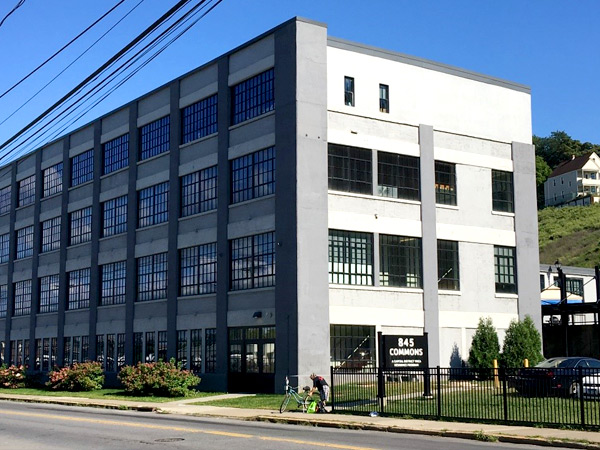Adaptive Reuse and Redevelopment in Schenectady, New York

A former factory in Schenectady, New York, is finding new life as supportive housing for men, including veterans, disabled individuals, and those facing mental illness. Once an insulator factory, 845 Commons is now a 96,060-square-foot residential property that serves some of the community’s most vulnerable residents and demonstrates the critical role of partnerships in integrating affordable housing into community and economic development.
Opened in January 2015, the 845 Commons project took approximately 8 years to complete and involved the work of numerous community partners at the state level, including the New York State offices of Homes and Community Renewal (HCR), Temporary and Disability Assistance (OTDA), and Historic Preservation. Local partners included the city government, the Schenectady Metroplex Development Authority, the City of Schenectady Industrial Development Agency (IDA), and the Capital District YMCA, which manages 845 Commons. The Preservation League of New York State recognized 845 Commons with an Historic Preservation Award in April 2016 for reviving the 100-year-old property.
Leveraging Partnerships Through Historic Preservation
Before the completion of 845 Commons, the Capital District YMCA previously housed male veterans in an aging building in downtown Schenectady that had 90-square-foot rooms and lacked private bathrooms or showers. As the Schenectady Metroplex Development Authority, dedicated to streamlining economic development in the region, began exploring the possibility of selling the centrally located YMCA facility, it became clear that the sale would potentially displace the YMCA’s downtown residents who required supportive housing. Many community partners began to mobilize to identify possible sites and strategies for rehousing the YMCA’s residents while also achieving the city’s broader goals of downtown redevelopment.
Developers ultimately decided to build 845 Commons on the former Mica Insulator Company, a factory built in 1915 near the city’s downtown that had been vacant for many years. The site represented a unique opportunity to house a vulnerable group of men, including military veterans; preserve a historic factory, collocate housing with the county’s Department of Social Services, and connect an adjacent neighborhood to the central business district. Partners from the city, state, and private sector drew the important connection between the city’s derelict buildings and the resources available to adaptively reuse failing buildings for historic preservation and low-income housing.
Read the full article here.
“Adaptive Reuse and Redevelopment in Schenectady, New York.” Adaptive Reuse and Redevelopment in Schenectady, New York, 2018, www.huduser.gov/portal/pdredge/pdr-edge-inpractice-110518.html.
Back To All Posts